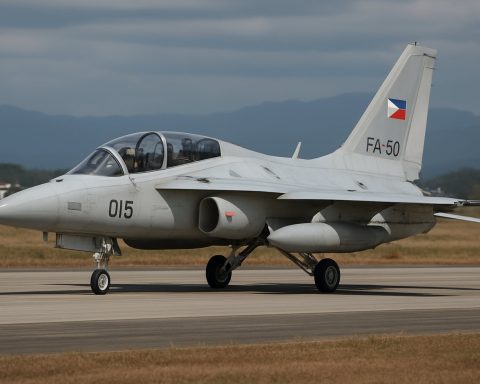- Japan’s Air Self-Defense Force scrambled jets 704 times in fiscal 2024, marking a significant increase in potential airspace violations.
- About 65.9% of scrambles were triggered by Chinese aircraft near or within Japanese airspace, highlighting ongoing geopolitical tensions.
- The frequency of detected Chinese drones has tripled, indicating a shift from exploratory to operational deployments.
- A notable incident in August saw Chinese military jets breach Japanese airspace off the Danjo Islands for the first time.
- Chinese drone activity has expanded to areas like Amami-Oshima Island, signaling broader strategic ambitions.
- Russian aircraft encounters increased, with Japan deploying decoy flares amid heightened provocations near Rebun Island.
- The situation highlights the balance of defense and diplomacy, with Japan committed to safeguarding its sovereignty amidst international complexities.
The skies above Japan are becoming a dynamic theater of geopolitical maneuvering, as recent figures from the Defense Ministry reveal a surging number of aerial encounters. In fiscal 2024, Japan’s Air Self-Defense Force (ASDF) scrambled jets a startling 704 times in response to potential airspace violations—a significant uptick from the previous year.
Amidst these numbers, a captivating drama unfolds, centered largely around Chinese military activity. Of the total scrambles, approximately 65.9% were in reaction to Chinese aircraft poised near or within Japanese airspace. This engagement, although slightly reduced from last year, underscores a broader, evolving strategy. The frequency of detected Chinese drones has more than tripled, suggesting a strategic shift from exploratory drone flights to fully operational deployments.
A striking incident in August marked a pivotal moment when Chinese military airplanes breached Japanese airspace off the Danjo Islands in Nagasaki Prefecture—the first known violation at this location. The increased presence of drones now extends over new areas such as the Amami-Oshima Island, hinting at China’s expanding technological reach and strategic ambitions across broader swathes of the region.
Meanwhile, Russian engagements have not waned. With a notable increase in Russian aircraft encounters—up by 63 from the previous year—the ASDF faced provocations that escalated to unprecedented levels. In a bold display of deterrence, Japanese fighters deployed decoy flares for the first time in response to Russian aircraft encroaching on its airspace near Rebun Island in September.
This aerial ballet of sorties and violations reflects the intricate dance of defense and diplomacy in which Japan is engaged. At its core, this situation emphasizes a crucial point: in a world defined by complex international relations, vigilance and innovation remain paramount. As global powers test boundaries in the sky, Japan’s resolve to safeguard its sovereignty becomes ever more critical. In the swirling currents of aerial chess, Japan stands poised and ready—an unwavering sentinel in the storm.
What’s Happening in Japan’s Skies: A Deep Dive into Aerial Geopolitics
Introduction
The skies above Japan are increasingly becoming a strategic arena for geopolitical tensions. Recent statistics from Japan’s Defense Ministry highlight a dramatic rise in aerial encounters in fiscal 2024. With 704 scrambles by the Japan Air Self-Defense Force (ASDF), the situation underscores escalating tensions, particularly with China and Russia. This article unpacks the complexities of these encounters, technological advancements, and their broader implications.
Exploring the Numbers: What’s Driving the Surge?
Japan’s response to potential airspace violations has intensified. Approximately 65.9% of these scrambles involve Chinese aircraft, showing a strategic pivot using drones for surveillance and operational deployments. The tripling of detected Chinese drones indicates a shift from mere reconnaissance to active monitoring and tactical engagements. Furthermore, Russian aircraft maneuvers have fueled an uptick in Japanese defensive activities, with notable increases in provocation incidents.
China’s Expanding Aerial Ambitions
Technological Advancements:
China’s evolving drone technology is instrumental in its strategic military objectives. The ability to deploy drones over new regions, such as the Amami-Oshima Island, reflects China’s advanced unmanned aerial capabilities and ambition.
Geopolitical Strategy:
China’s airspace intrusions suggest a broader geopolitical maneuver aimed at demonstrating power and testing Japan’s defenses. This marks a critical phase where sophisticated technologies meet strategic territorial assertions.
Russian Encroachments: A Persistent Challenge
Though overshadowed by China’s actions, Russian military air activity has also intensified. September’s events near Rebun Island, where Japan responded with decoy flares, illustrate a heightened level of engagement and the potential for miscalculation.
Industry Trends: Aerial Defense Innovations
Market Forecasts:
Industry trends indicate a significant investment in defense technologies. According to market analysis reports by Gartner, the global defense industry is expected to grow, with a considerable focus on counter-drone systems and advanced radar technologies.
Technological Advancements:
The incorporation of artificial intelligence and machine learning in surveillance and interception systems is being explored to bolster defense mechanisms, providing real-time analytics for quicker response times.
Strategic Recommendations for Japan
1. Strengthen Defense Alliances:
Japan should continue to fortify alliances, particularly with Western powers, to ensure a robust defensive posture.
2. Invest in Counter-Drone Technologies:
Enhancing capabilities to neutralize drones will be critical, ensuring Japan can protect its airspace effectively.
3. Enhance Diplomatic Dialogues:
Balancing military responses with diplomatic initiatives will be crucial in managing tensions and preventing escalation.
Conclusion
Japan’s aerial defense landscape underscores the intricate interplay of military strategy and diplomacy. By investing in advanced technologies and fostering international partnerships, Japan can maintain its sovereign integrity while contributing to regional stability. For residents and policymakers, vigilance and investment in innovation remain key to navigating these turbulent skies.
For further information on Japan’s defense initiatives and policies, visit Japan’s Ministry of Defense.








